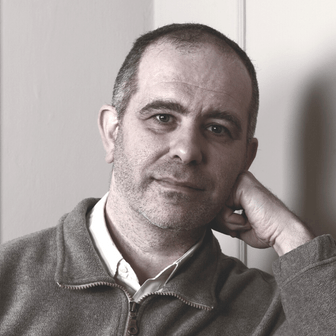Via Francigena

The
road called " Via dei Longobardi" became the
Iter Francorum, or " Via Francisca"
in the 'Itinerarium sancti Willibaldi' dated
725 A.C.
" Via Francigena" is mentioned with this name for
the first time in the Actum Clusio, a parchment of
876 conserved in the Abbey of San Salvatore al Monte
Amiata (Tuscany). It is the main
pilgrimage route of Northern Europe, ever more attended with the
arriving of the Holy Years in the 1300s.
But it is during the historic journey of the Archbishop of
Canterbury, Sigeric, (carried out in 990 A.C.) that the Via Francigena found one of its uniatism available to, in
planning terms, both a tourism level as well as an increase in
cultural heritage value and all things afferent.
History narrates that Sigeric, returning from Rome where he had
gone in pilgrimage in order to receive directly from Pope John VI
the " pallio" or bishop's cloak, left a meagre
but priceless list of the 79 stopping places, or "submansiones" of the journey completed from the Papal
headquarters to the Atlantic coast ("de Roma usque ad
mare"), determining the birth of one of the most important
pilgrimage routes.
Via Francigena starts from Canterbury, travels the
county of Kent, arrives at the Channel,
follows along the French regions of Nord Pas de Calais,
Picardie, Champagne-Ardenne Franche-Comté, crosses the
border of Switzerland in the canton of Vaud and, in Italy, unwinds
through the regions: Valle d’Aosta, Piedmont, Lombardy, Liguria,
Emilia Romagna, Tuscany and Latium.
It should be remembered however, that it is not actually about
“one” road, but a 'road territory', an all together of
routes used in various times, according to traffic types,
political, topographical and climatic
events of the various areas.
The most frequented " francigeni" passes through the
Alps were Monginevro and Moncenisio, confluent, in the Italian slopes, in the
Susa roadway junction. Other access points were the
Grande e il Piccolo S. Bernardo, the outlet of
which on the Italian slopes is the Valle d’Aosta.
Of all of these passes, one of the most frequented by pilgrims was
certainly that of Moncenisio, whose access to Italy
is marked by the very ancient Novalesa Abbey and by
the Sacra di S. Michele. Other fundamental stopping
places were Pavia, ex-capital of Lombardy,
Piacenza, a very important roadway junction,
Fidenza, junction point between the plain routes
and the Monte Bardone pass, and along the Apennine
stretch, the cities of Fornovo and Berceto. Beyond the Apennines, the route reached Pontremoli and Luni. The decline of the
Luni harbour, beginning in the 8th
century, brought on the development of Sarzana,
Massa and Pietrasanta, which,
placed along the ancient directrix of the consular road, via
Aurelia, became fundamental points of
“ francigeno” transit. After Pietrasanta, having left the coastal area, insecure due to
the pirate incursions, the most frequented route reached Camaiore, Lucca, Altopascio, splendid example of welcome and
aid centres among the best organized in Medieval Europe. After
Altopascio, the stretch of the Francigena reached Val d’Elsa and Siena. From there it connected with the Roman Cassia, reaching Acquapendente, Bolsena,
Montefiascone, Viterbo, Capranica, Sutri, Monterosi. At
La Storta, in the outskirts of Rome, pilgrims
preferred to leave the Cassia, which crossed
unhealthy and dangerous areas, in order to follow the ancient
Via Triumphalis arriving at the Vatican from
Monte Mario, called Mons Gaudii ('mount of joy'). Access to St.
Peter's square occurred on the right side, from the via del Pellegrino and Porta Sancti
Pellegrini along the stretch of road that, not by chance, was
called for a long time the " ruga
francisca" 'strada dei francesi' (road of
the French).
The European Union has adopted the Sigeric
itinerary found in a precious manuscript at the British Library in
London, as the official itinerary of the Cammino per
Roma (March to Rome). Via Francigena was however the one
documented by Sigeric in the 10th century.
In 1994 the European Council recognized Via Francigena with the
dignity of "European Cultural Itinerary ", equal to the Santiago
March directed to the tomb of the Apostle James, defender of
Christianity. Wanting thus to affirm, in the widest sense, the
European cultural identity in its diversity and its uniatism, in
particular by means of the increase in value of its monumental and
artistic patrimony. Via
Francigena represented the union and communication between
various cultures and ideas of different European countries, a
Europe that today sees barriers fall but already at the time
expressed the desire and the necessity to be united.
Via Francigena in Valle di Susa
Crossing the hills of Moncenisio or even of Monginevro the pilgrims arrived at Oulx to then proceed toward Susa, and on this very ancient road of Moncenisio is found the Novalesa Abbey. Further on they reached Bussoleno onto which outlets the ravines of Chianocco and Foresto, limestone gorge engraved in the mountain dug out by the Prebech torrent. From Bussoleno they proceeded towards Avigliana from which is already easily seen Sacra di San Michele, castled on Monte Pirchiriano, to then reach the church of Sant’Antonio di Ranverso, in the outskirts of Rivoli, a place of welcoming and restoration for the pilgrims, often preferred over Turin. The route proceeded towards Turin and therefore, after Chieri entered Monferrato toward Asti.
Ciao,
mi chiamo Stefano.
Piemonte Sacro è la mia passione dal 2001.
AIUTA il progetto Piemonte Sacro a crescere
DONA SOLO 2 euro! Te ne sarò GRATO .




